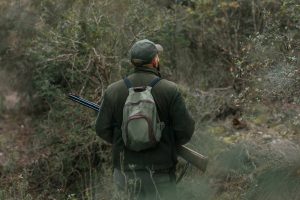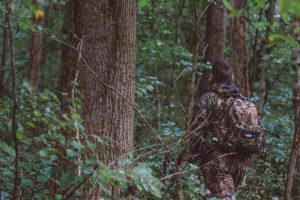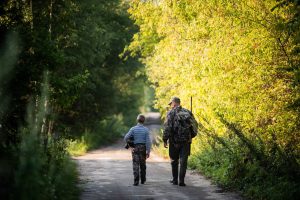Hunting regulations are a set of laws and rules that dictate when, where, and how a person can hunt. They are designed to ensure the safety of the hunter, the public, and the animals being hunted. Regulations vary based on federal, state, or local law and are designed to preserve the environment and prevent over-hunting. It is important for hunters to understand these regulations in order to stay compliant, safe, and respectful when they are out in the field. In the following article, we will discuss the types of regulations, how to stay compliant, and safety regulations that all hunters should follow.
Types of Regulations
Hunting regulations can be broken down into three main categories: federal regulations, state regulations, and local regulations. Federal regulations apply to all hunters across the country, regardless of their location. State regulations may vary depending on where the hunter is located and the type of game they are hunting. Lastly, local regulations may be enforced by a county or municipality, such as a city or town. Each type of regulation must be understood in order to stay compliant with the law.
Federal Regulations
Federal hunting regulations are set by the U.S. Fish and Wildlife Service and are applicable to all hunters across the country. These regulations include the types of weapons and ammunition that can be used, the number of animals that can be harvested, and the areas where hunting is allowed. Federal regulations also cover the transportation, storage, and sale of game. In some cases, federal regulations may be more restrictive than state or local regulations. For example, the use of lead ammunition is prohibited on certain federal lands. Additionally, some federally protected species, such as bald eagles, are not allowed to be hunted.
A hunter can use a variety of resources to learn more about federal hunting regulations. The U.S. Fish and Wildlife Service website is a great place to start. It contains detailed information on the federal regulations and restrictions. Additionally, hunters can reach out to local wildlife management offices or conservation groups for more specific information on their state or local regulations. Finally, hunters can also attend hunter education classes, which are offered in many states and provide detailed instructions on how to comply with the regulations.
State Regulations
State regulations vary depending on the state in which the hunter is located. These regulations may include restrictions such as the types of weapons and ammunition that can be used, the number of animals that can be harvested, and the areas where hunting is allowed. For example, some states may have restrictions on the use of certain weapons or ammunition, or may limit hunting to certain areas. Additionally, some states may have additional restrictions on certain animals, such as endangered species or bears. It is important for hunters to research the regulations in their state before they hunt.
A hunter can use a variety of resources to learn more about state hunting regulations. The state wildlife agency website is a great place to start. It contains detailed information on the regulations and restrictions in the state. Additionally, hunters can reach out to local wildlife management offices or conservation groups for more specific information on their state regulations. Finally, hunters can also attend hunter education classes, which are offered in many states and provide detailed instructions on how to comply with the regulations.
Local Regulations
Local regulations may be enforced by a county or municipality, such as a city or town. These regulations may include restrictions such as the types of weapons and ammunition that can be used, the number of animals that can be harvested, and the areas where hunting is allowed. Additionally, some local regulations may have additional restrictions, such as hunting on public land or within city limits. It is important for hunters to research the local regulations before they hunt.
A hunter can use a variety of resources to learn more about local hunting regulations. The local wildlife agency website is a great place to start. It contains detailed information on the regulations and restrictions in the area. Additionally, hunters can reach out to local wildlife management offices or conservation groups for more specific information on their local regulations.
How to Stay Compliant
Once a hunter has done their research and obtained the necessary licenses, it is important to understand the rules and boundaries of the regulations. Knowing the regulations can help keep the hunter safe, compliant, and respectful when they are out in the field. In the following section, we will discuss how to stay compliant with the regulations, as well as the safety regulations that all hunters should follow.
Research Regulations
The first step to staying compliant with hunting regulations is to research the regulations. It is important to know the federal, state, and local regulations that apply to the hunter and the area they are hunting. Federal regulations can be found on the U.S. Fish and Wildlife Service website. State and local regulations can be found on the state wildlife agency website or by contacting local wildlife management offices or conservation groups.
In addition to researching the regulations, hunters should also make sure to stay up to date on any changes or updates to the regulations. Many states and localities make changes to their regulations on a regular basis, so it is important to check for any changes before heading out to hunt. Additionally, hunters should also be aware of any special regulations that may be in place for certain areas, such as public lands or national parks. Finally, it is also a good idea for hunters to carry a copy of the regulations with them when they go hunting, so they can easily reference them if needed.
Obtain the Necessary Licenses
Once the hunter has done their research and is familiar with the regulations, they must obtain the necessary licenses. Depending on the state, the hunter may need a hunting license, a permit, or both. Hunting licenses can be obtained from the state wildlife agency, while permits may be obtained from the local wildlife management office. Licenses and permits are typically valid for a certain period of time, so it is important to check the expiration date before hunting.
In addition to obtaining the necessary licenses, hunters should also be aware of any special permits or tags that may be required. For example, some states may require a special permit to hunt certain animals, such as bears or elk. Additionally, some states may require a tag or stamp to be purchased in order to hunt certain species. Lastly, it is important to check the expiration dates of the licenses and permits, as they may need to be renewed on a regular basis.
Learn the Rules and Boundaries
In addition to obtaining the necessary licenses, it is important for hunters to understand the rules and boundaries of the regulations. This includes knowing the areas that are open to hunting, the types of weapons and ammunition that can be used, and the number of animals that can be harvested. It is also important to know when hunting is allowed, as some areas may have restrictions on certain days or times.
It is also important for hunters to be familiar with the terrain, weather, and animals in the area. This can help the hunter stay safe and be more successful in their hunt. Additionally, hunters should also be aware of any special laws or restrictions that may be in place, such as restrictions on hunting at night or in certain areas. Lastly, it is also important to be aware of any seasonal closures or restrictions that may be in place, such as migratory bird seasons or deer hunting seasons.
Safety Regulations
In addition to the regulations that dictate when, where, and how a hunter can hunt, there are also safety regulations that all hunters should follow. These regulations help ensure the safety of the hunter, the public, and the animals being hunted. In the following section, we will discuss the safety regulations that all hunters should follow.
Wear Bright Clothing
The first safety regulation that all hunters should follow is to wear bright clothing. Bright clothing makes the hunter more visible to other hunters and animals in the area. This helps to prevent accidental shootings and ensure that the hunter is seen by game animals. Additionally, bright clothing also helps other hunters identify the hunter, so they can be sure not to shoot at them.
This clothing should be made of a material that is durable, waterproof, and breathable. Additionally, the clothing should be bright enough to be seen by other hunters and animals in the area. Many outdoor stores carry a variety of bright hunting clothing and accessories, such as hats, vests, and jackets.
Use the Right Weapons
Another safety regulation that all hunters should follow is to use the right weapons. Different weapons have different capabilities, and it is important to use a weapon that is appropriate for the type of game being hunted. Additionally, hunters should make sure that their weapons are in good working order and that they have the necessary safety equipment, such as ear and eye protection.
Common hunting weapons include shotguns, rifles, and bows. Shotguns are well-suited for close-range hunting, such as waterfowl and turkey. Rifles are best for medium- to long-range hunting, such as deer and elk. Bows are the most technical and require the most practice to master. Additionally, each weapon has its own unique benefits and drawbacks, so it is important for the hunter to research and choose the right weapon for their needs.
Respect Wildlife and Property
The last safety regulation that all hunters should follow is to respect wildlife and property. This means being mindful of the environment and staying within the boundaries of the regulations. It also means being respectful of other hunters and animals in the area, as well as being respectful of the property of others.
Some important tips for respecting wildlife and property are to stay on marked trails, avoid disturbing wildlife, and be mindful of private property. Additionally, hunters should avoid littering and leave the area as they found it. Lastly, hunters should also be aware of their surroundings and take steps to avoid putting themselves or others in danger.
Stay Compliant, Safe, and Respectful
Hunting regulations are designed to ensure the safety of the hunter, the public, and the animals being hunted. It is important for hunters to understand these regulations in order to stay compliant, safe, and respectful when they are out in the field. In this article, we have discussed the types of regulations, how to stay compliant, and safety regulations that all hunters should follow. In conclusion, it is essential for hunters to research and understand the regulations in order to stay compliant, safe, and respectful.
More Hunting Posts
Tylor Bennett
An editor at Outdoors ReportTylor Bennett is a senior editor for the blogzine and also reports on breaking news based in London. He has written about government, criminal justice, and the role of money in politics since 2015.
0 comments
Leave a reply
Your email address will not be published. Required fields are marked *A Beginner’s Guide to Backpacking












